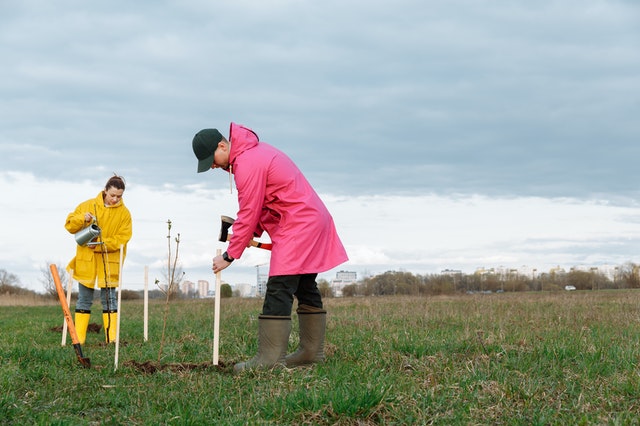You might think that spring is the perfect time to revegetate your lawn. Abundant with winter moisture, fertilizer, and the warmth of the sun, spring is said to be the prime time for plant growth. However, veteran gardeners would tell you otherwise. The fall season is also a good time for garden repopulation. Of course, the best time to plant trees will depend on various factors. For seasonal countries like Canada, fall is an ideal time to plant trees. Read on to find out.
Why Plant Trees in Fall?
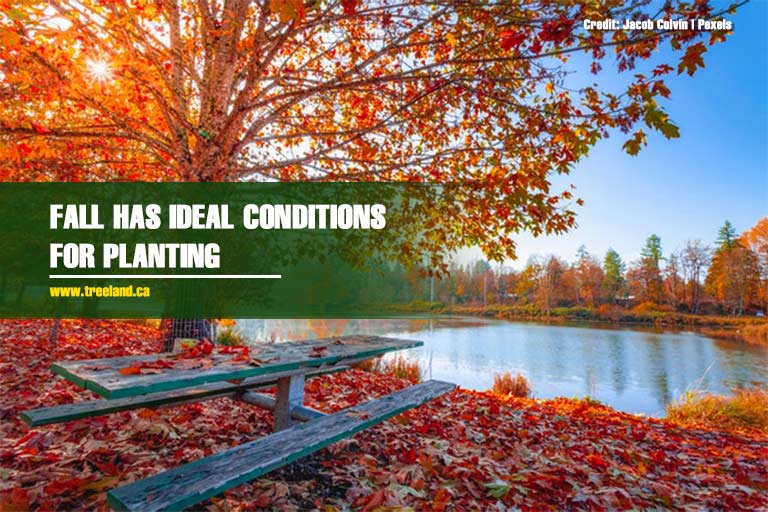
Planting trees during autumn might seem counterintuitive, but when you look at the yearly cycle, doing this would give an extra season for your trees to grow. With cool near-winter temperatures, fall rains, and dried leaves as fertilizer, your trees will have higher chances of growing strong.
You’re giving your trees an extra season to grow, which will make them sturdy and healthy in the middle of spring. Planting during fall allows your trees to establish strong roots and gain more soil space as weeds and other invasive plants lay dormant. This early growth will also help your plants thrive during summer droughts.
It’s also important to correct the myth that younger trees are likely to die during winter. The truth is that while trees may look weak or dead during winter, their roots remain active and continue to search for nourishment.
Not Just About Timing
During winter while the roots are slowly gathering water, nutrients, and strength, the tree is merely biding its time till spring returns. Once spring comes, the tree you’ve planted during the fall is fully nourished and will grow at a much faster rate compared to those planted during spring.
Planting during the fall is not just about timing. You have to get the location right too. The perfect spot for autumn gardening should be evenly abundant with shade, sun, and moisture. If you’re planting invasive and large arbour trees, be wary and check your property blueprint to avoid utility damage.
Do Research
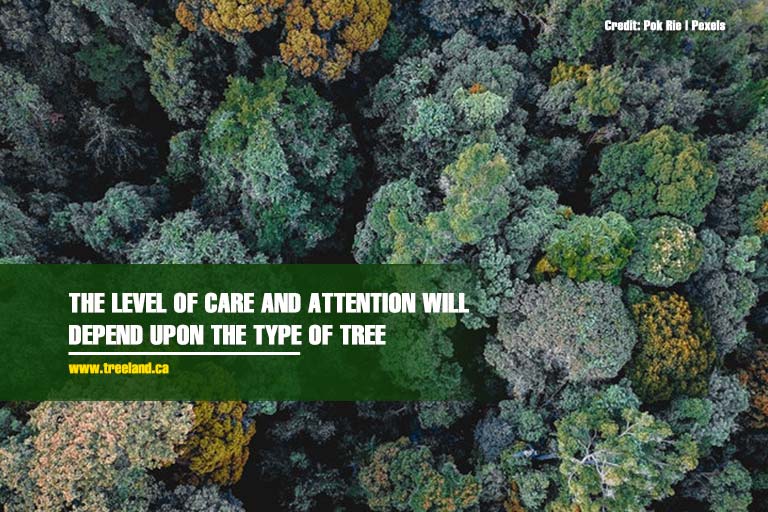
The best advantages and results that you can get from planting trees during fall are its fortified root system and the less work that you have to put in. The natural shifts in temperature and moisture will act as the daily cultivation and nourishment that your tree needs.
However, before you buy trees online from tree companies in Canada, you should do some research on the plant species beforehand. Each kind and type will require distinct methods of care.
Cheaper Trees
To avoid any surplus trees during winter, businesses will often sell their trees at a much cheaper price during fall. Since maintaining many of them at this time will be much harder due to weather unpredictability, you can have a pick of the bunch during these sales.
When Is Planting Too Late in the Fall?
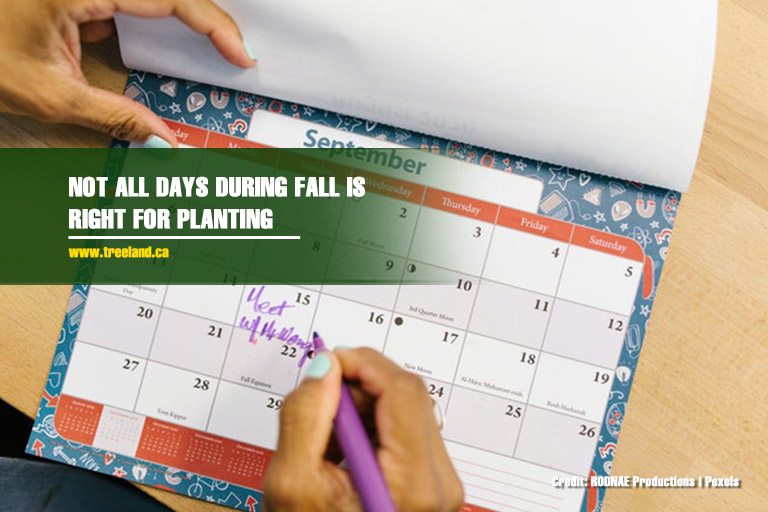
Planting trees before winter might seem like a risky move for new garden owners. However, if you’re planning to grow privacy trees or take advantage of high-quality trees for sale in Toronto or the evergreen trees for sale in Brampton during fall, then it is the right season.
You don’t have to fret about the frigid breeze or the torrential rains because there are ways to use them to your advantage. Planting during the fall gives you an early head start. However, at the later moments of the season, things might not work out so well.
Scattering your seeds too late in the autumn season defeats the purpose of a running start that early gardening provides. The perfect days for fall gardening are from the middle of August to the middle of October.
This time frame can have different windows for optimal growth but overall, any tree planting activity around these months will have good results.
Careful Observation
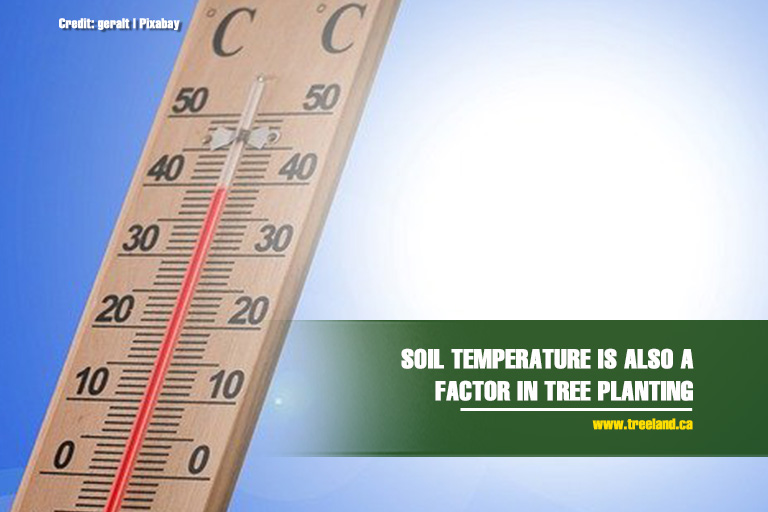
You just have to be vigilant of the current climate conditions to determine if it’s still okay to plant late. A great rule of thumb is to look around the trees in your garden. If they still have leaves left on their branches, then it’s still okay to plant new trees.
Gardening tools like soil thermometers can also help you make an informed decision. The best temperature for plant growth is 10°C and higher. Anything lower than that temperature would be too dry, too late, and too dangerous for your young trees.
Note that planting at 10°C or higher is an excellent guideline for plants that shed before the winter. Gymnosperms, like spruce and pine, have to be planted at soil temperatures not less than 15°C to keep their roots safe, moist, and warm. If it’s too cold, they would not have enough time to save up on nutrients and energy. Frigid and frosty soil can lead to stunted root development, nutrient decline, and eventual death.
Fall Tree-Planting Tips
The success of your autumn gardening all boils down to proper aftercare and attention. You can follow these tree planting tips that will make your fall gardening experience much easier:
- Know your trees
Specific species of trees thrive in certain kinds of soil, location, and conditions. You may be able to buy the best stocks of young trees in tree nurseries, but if they’re not appropriate for the size or location of your garden, then all that investment is useless.
There are 3 types of trees that you can choose from, namely:
- Bare-root trees that are field-grown and transferred with moisture packed roots
- Container-grown trees that are nurtured in pots and moved with biodegradable vessels
- Burlapped trees that thrive on clay soil which can make delivery much more difficult due to moisture maintenance problems
Consider the following when selecting your trees:
- Hardiness – Weather plays an important role in determining the survival of your plants during the fall. Experts say that trees and shrubs that thrive in cold climates have an average minimum limit of -24°C to a maximum of -35°C. However, your trees should also be versatile enough to handle the summer heat.
- Size (in maturity) – Controlling tree size and height is one of the key components to prevent any landscape problems. When you’re planting trees, make sure that they are correctly spaced out, to minimize nutrient competition and sunlight blockage. An overcrowded lawn can interfere with electrical wires, utility lines, and pedestrians. So, before you purchase your next tree, look up its size at maturity first for a quick space estimate.
- Soil Conditions – Soil pH level is a key indicator in examining the compatibility of your area to the tree you are planning to plant. To determine what kind of soil your garden has, measure its pH level first. Most trees thrive in neutral soil environments with a pH level that ranges from 6.0 to 7.5.
- Vulnerability to pests – Insects and pests are the bane of every plant-lover. They are an inevitable enemy that can come at any time. Unfortunately, some trees and shrubs are more vulnerable to these attacks. If you think you have a potential pest problem on your lawn then it’s best to avoid certain trees.
- Find the right location
Sunlight, soil, and water are the main components that are required for your trees to thrive. It’s important that each tree’s individual requirements are met. The location can drastically affect their growth. To ensure that they are growing in suitable conditions, the soil should be a perfect combination of crumbly and moist.
The location is also a factor if you want to set up privacy trees. Make sure that the soil that borders your property is primed for tree planting.
- Clean out the plot
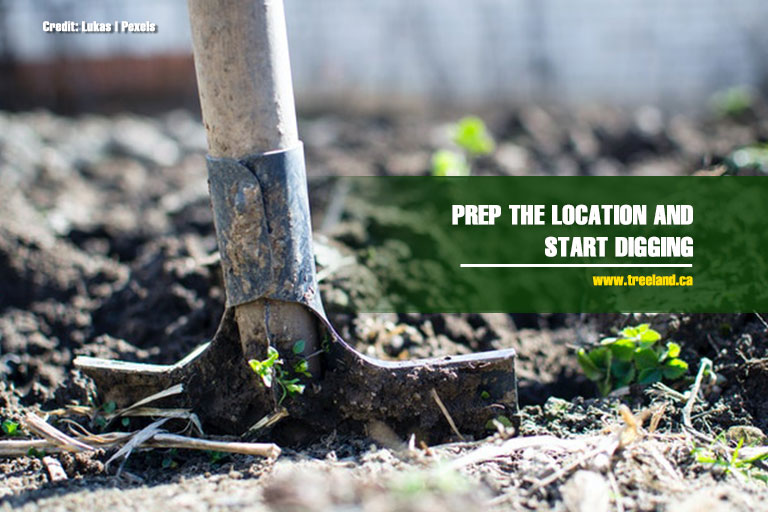
Once you’ve chosen the location, you can then proceed with removing the sod and clearing out any rocks and debris. Using a flat shovel, carefully root out any weeds and invaders surrounding the plot.
- Prep the roots
The roots of your tree serve as its highway for nutrients and water. If they are blocked and breached, your tree will eventually have stunted growth and die. So, before you stick your saplings in the ground, you need to prepare the roots first.
Before putting them in, make sure that there are no blackened and damaged tips. If any of those exist, you can cut them off and treat them with plant medicine. Cutting roots that are too long will also prevent tangles and aid nutrient absorption. If they are wrapped in burlap, you don’t have to unpack them. You can directly place them and bury them. Burlap is biodegradable and provides extra nourishment.
- Work on the soil
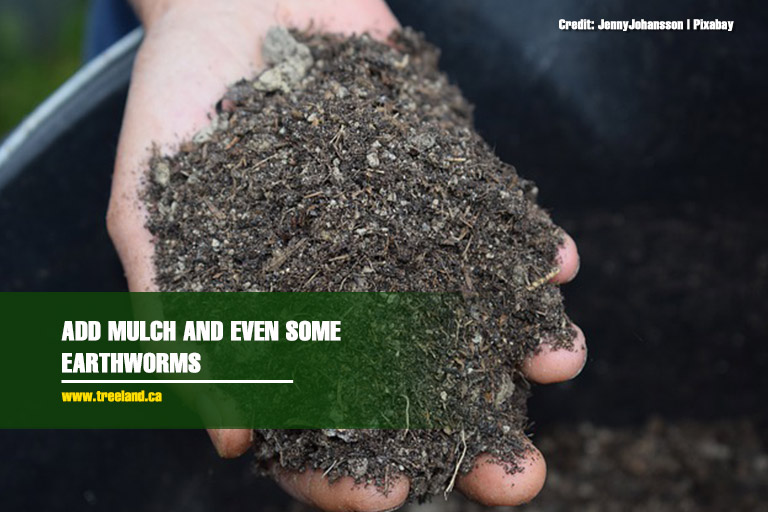
Soil cultivation is integral for healthy root growth. Just like any other living thing, plants need ground space to grow.
Dig a hole that’s at least 3 times bigger than the diameter of your sapling’s root system. This extra space will serve as CO2 gates, proper drainage, and water vapour entrance.
Prepare the soil by poking holes in it with narrow sticks. You can even add in a healthy bunch of earthworms that will do the job for you. These tiny holes will help the roots penetrate the soil better.
After this, add mulch made of wood chips and dried leaves around the soil and roots. You can even wrap them around the root ends to prevent rodents from gnawing on them and keep the winter cold from destroying them.
- Hydrate and support
Be wary of minor weather changes. If you think there’s too much (or too little) moisture in the air, adjust the daily water supply that you give to your young trees. You can even set up some support stakes to ensure that your trees grow upright and develop safely.

For your tree and shrub needs in Ontario look no further than Caledon Treeland. Call us today at (905) 880-1828 or email us at treeland@treeland.ca to find maple trees and pine trees for sale.

